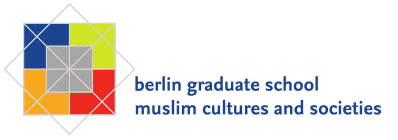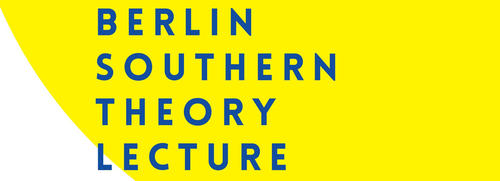Networking with Viruses: A Multispecies Ethnography of Zoonotic Viral Pathogen Circulation in The Gambia
Moments of spatial overlap between humans, domestic animals, and wildlife in changing landscapes: during daily cattle herding through harvested farms, the herder’s shoes and machete lie beside an opportunistically caught lizard. Photo: H. Debelts
This PhD Project aims to provide an in-depth understanding of local interactions among more-than-human communities (Brown and Nading 2019) within their respective environments. Furthermore, it seeks to expand anthropological knowledge of zoonotic infection dynamics among rural communities in The Gambia (Keck and Lynteris 2018). For this reason, my research employs a spatio-temporal and multi-sited ethnographic approach with three main objectives.
Firstly, to gain granular insights into the dynamics of multispecies communities (humans, other animals, and microbes/viruses) across different living arrangements and landscape gradients (Tsing 2019, Kirksey and Helmreich 2010), two research sites are purposefully selected, reflecting different landscapes, community sizes, infrastructure, and population characteristics: a small village surrounded by forest and the Gambia River, and a relatively larger village embedded in vast farmlands close to the southern border with Senegal. Both villages are composed of two different ethnic groups, respectively. These differing sites provide insights into how activities, movement patterns, as well as health-seeking behaviours and local histories, vary and thus may differently influence drivers and various types of (direct and indirect) contact of people, their domestic and wild animals, and thus potentially the circulation of viruses.
Secondly, building on previous social science research (cf. Latour 1996), the study aims to create more-than-human network analysis by developing social network models for the different landscape gradients (e.g., farm, bush, border region) and the respective actors (e.g., humans of different genders and ages, domestic or wild animal species, viruses, water places, specific materials) over time (e.g., daily cycles, across seasons, and in changing climates). This approach allows for considering viruses as actors with their own characteristics (Kelly and Marí Sáez 2018), devices, artefacts, and fluids that shape the more-than-human social network, thus influencing multispecies contacts. It also facilitates the inclusion of mechanisms and drivers that "cut the network" (Strathern 1996), such as cultural contact rules, religious practices, or individual strategies to gain access to services, people, places, or animals.
Finally, I plan to explore the multiplicity and frictions of knowledge (and technologies) that re/make and re/shape our understanding and framing of zoonotic diseases and viruses (Brives et al. 2021, Mol 2003). This will help create a bridge between the different parties in an international, transdisciplinary project (e.g., life sciences with lab work and social sciences) and the local realities in the field, while reflecting on national and global agendas, as well as discourses in academic spheres.
I am part of a larger transdisciplinary and international project titled “A Social-Ecological Network Approach to Understanding Zoonotic Outbreak Risk” (SENZOR), which aims to shed light on how human-landscape interactions in West Africa affect the types of zoonotic pathogens people are exposed to, by being part of multi-host-multi-pathogen networks. A better understanding of host-pathogen networks, and how they may vary over time and space, will help prepare for, predict, and prevent future outbreaks and pandemics.
Project Partners: Centre for International Health Protection (ZIG) at Robert Koch Institut (RKI), Germany; Medical Research Council Unit The Gambia (MRCG) at London School of Hygiene and Tropical Medicine (LSHTM), England; African Centre of Excellence for Genomics of infectious Diseases (ACEGID) at Redeemer’s University, Nigeria; L'Institut de recherche pour le developpement (IRD), France; Natural History Museum London, England
Funding: The project is funded by the Volkswagen-Foundation “Global Issues” Initiative within the Call “Preventing Pandemics: the Role of Human-Environmental Interactions”.
Duration: 2023-2027
References:
Brives, C., Rest, M. and Sariola, S. 2021: With Microbes. Manchester, Mattering Press.
Brown, H. and A. M. Nading (2019). "Introduction: Human Animal Health in Medical Anthropology." Med Anthropol Q 33(1): 5-23.
Kelly, A.H. and Marí Sáez, A. (2018): Shadowlands and dark corners: An anthropology of light and zoonosis. Zoonosis: Prospects and challenges for medical anthropology 5(3).
Keck, F. and Lynteris, C. (2018): Zoonosis: Prospects and challenges for medical anthropology. (2018). Medicine Anthropology Theory, 5(3).
Kirksey, S. E. and S. Helmreich (2010). "The Emergence of Multispecies Ethnography." Cultural Anthropology 25(4): 545-576.
Latour, B. (1996). "On actor-network theory: A few clarifications." Soziale Welt 47(4): 369-381.
Mol, A. (2003): The Body Multiple: Ontology in Medical Practice. Durham, Duke University Press.
Strathern, M. (1996,). "Cutting the Network." The Journal of the Royal Anthropological Institute 2(3): 517-535.
Tsing, A. L., et al. (2019). "Patchy Anthropocene: Landscape Structure,Multispecies History, and the Retooling of Anthropology." Current Anthropology 60(20): 186-353.



